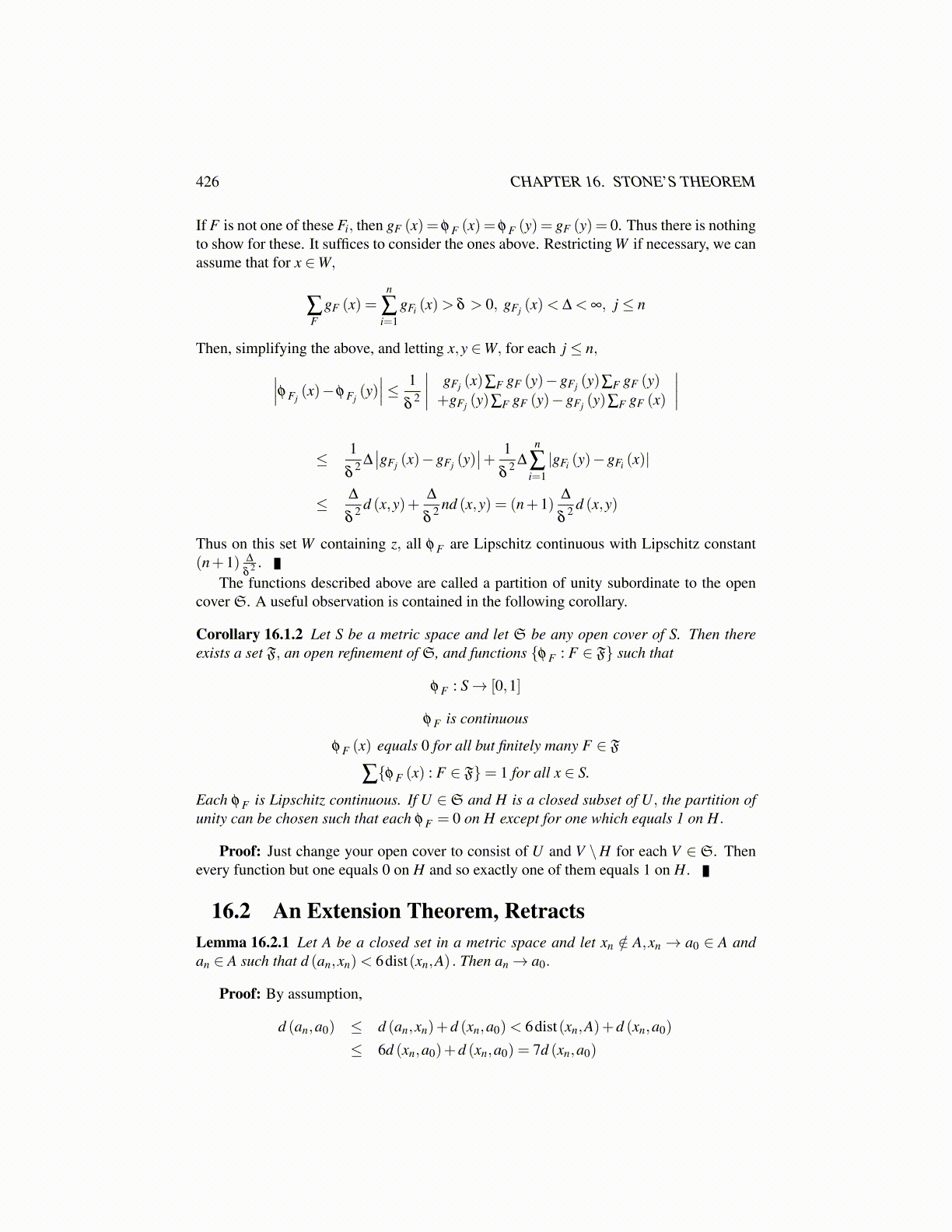
426 CHAPTER 16. STONE’S THEOREM
If F is not one of these Fi, then gF (x) = φ F (x) = φ F (y) = gF (y) = 0. Thus there is nothingto show for these. It suffices to consider the ones above. Restricting W if necessary, we canassume that for x ∈W,
∑F
gF (x) =n
∑i=1
gFi (x)> δ > 0, gFj (x)< ∆ < ∞, j ≤ n
Then, simplifying the above, and letting x,y ∈W, for each j ≤ n,∣∣∣φ Fj(x)−φ Fj
(y)∣∣∣≤ 1
δ2
∣∣∣∣ gFj (x)∑F gF (y)−gFj (y)∑F gF (y)+gFj (y)∑F gF (y)−gFj (y)∑F gF (x)
∣∣∣∣≤ 1
δ2 ∆∣∣gFj (x)−gFj (y)
∣∣+ 1
δ2 ∆
n
∑i=1|gFi (y)−gFi (x)|
≤ ∆
δ2 d (x,y)+
∆
δ2 nd (x,y) = (n+1)
∆
δ2 d (x,y)
Thus on this set W containing z, all φ F are Lipschitz continuous with Lipschitz constant(n+1) ∆
δ2 .
The functions described above are called a partition of unity subordinate to the opencover S. A useful observation is contained in the following corollary.
Corollary 16.1.2 Let S be a metric space and let S be any open cover of S. Then thereexists a set F, an open refinement of S, and functions {φ F : F ∈ F} such that
φ F : S→ [0,1]
φ F is continuous
φ F (x) equals 0 for all but finitely many F ∈ F
∑{φ F (x) : F ∈ F}= 1 for all x ∈ S.
Each φ F is Lipschitz continuous. If U ∈S and H is a closed subset of U, the partition ofunity can be chosen such that each φ F = 0 on H except for one which equals 1 on H.
Proof: Just change your open cover to consist of U and V \H for each V ∈S. Thenevery function but one equals 0 on H and so exactly one of them equals 1 on H.
16.2 An Extension Theorem, RetractsLemma 16.2.1 Let A be a closed set in a metric space and let xn /∈ A,xn → a0 ∈ A andan ∈ A such that d (an,xn)< 6dist(xn,A) . Then an→ a0.
Proof: By assumption,
d (an,a0) ≤ d (an,xn)+d (xn,a0)< 6dist(xn,A)+d (xn,a0)
≤ 6d (xn,a0)+d (xn,a0) = 7d (xn,a0)